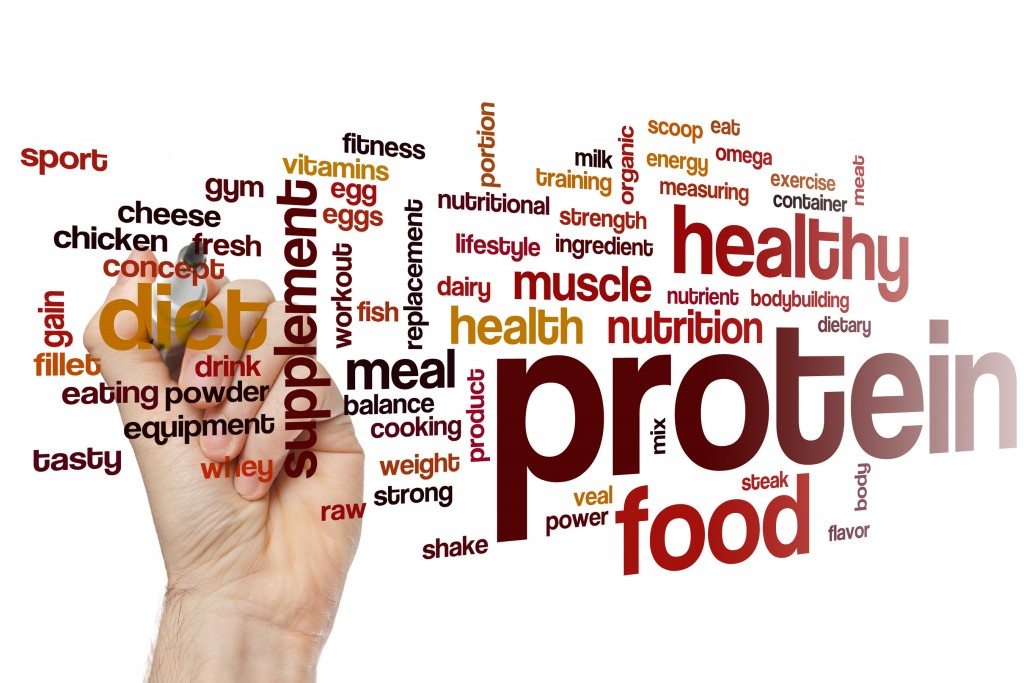
Protein appeals to consumers interest in satisfying appetite, managing weight, maintaining muscle and reducing risk of chronic disease.
Protein was among the top trends at the 2015 Institute of Food Technology annual scientific sessions and food expo, which featured the latest advances in food and ingredient technologies from around the world. This is consistent with current health science research and advice to consumers that they limit rapidly-digested carbohydrates, in order to prevent sharp increases in insulin that can lead to inflammation, obesity and risk for heart disease. Diets that emphasize substituting lean proteins in place of refined carbohydrates are associated with a more favorable (lower) insulin response. Protein-rich foods appeal to consumers who want to satisfy their appetite while managing weight and reducing risk of chronic disease. Some consumers also want to boost protein to support an athletic physique and avoid muscle loss associated with aging. After the age of 30, muscle mass typically begins to decline by 3 to 5 percent per decade in people who are inactive.
Approximately 55 percent of U.S. consumers say they want more protein [Neilson, 2015] and prefer getting it from foods naturally high in protein [Mintel, 2014]. Although overall meat consumption in the U.S. is down, meat snack consumption increased 18 percent over the past five years, with protein content noted as the primary reason for the spike [NPD Group, 2015]. Beef jerky (containing 13 grams of protein per ounce) leads in popularity, followed by others such as turkey, bison, buffalo, elk and salmon jerky. Among dairy choices, Greek yogurt now represents about half of all yogurt sold in the U.S. [Dairy Reporter, 2015]. The traditional Greek straining process concentrates and thereby increases the amount of protein per serving compared to conventional yogurt production methods.
A surprising new protein source derived from insects has been making its way into food products in the U.S. and abroad since August 2014, perhaps in response to the 25 percent of consumers who say they are interested in it [Mintel, 2014]. Both cricket flour and ground meal worms are emerging ingredients that supply protein. It remains to be seen whether consumption of insects will gain widespread acceptance. Current appeal is attributed to more adventurous and forward-thinking consumers. Among plant sources, pea protein was among the protein options featured at IFT 2015 and is showing potential for growth, along with the already sought after quinoa, lentils, nuts and nut butters, beans, chia seeds, hemp and sprouted grains. Marine-based plant proteins are gaining some traction, including algae (such as spirolina), kelp and seaweed.
As the protein trend continues to grow and choice of protein sources broaden, one fact remainseggs are still one of the most affordable sources of natural protein, supplying 6 grams protein per large egg. Eggs also supply optimal amounts of all nine essential amino acids, making eggs one of the highest quality protein food choices available to help consumers achieve their overall dietary goals.
References Cited
NMI and Neilson Wellness Track, ending 3/28/15, company websites
Mintel Research: Attitudes about protein, selected countries 2014
NPD Group Snacking in America Report 2015
Dairy Reporter; Greek Yogurt Revolution 2015
 Karen Buch, RDN, LDN, is the Founder and Principal Consultant at Nutrition Connections, LLC. Karen specializes in retail nutrition marketing and communications and was an invited expert speaker at the 2015 Institute of Food Technologists Meeting and Food Expo. Karen is part of the Egg Nutrition Center Health Professional Advisory Board for which she receives compensation in exchange for contributing to this blog. However, all opinions reflected in this post are her own.
Karen Buch, RDN, LDN, is the Founder and Principal Consultant at Nutrition Connections, LLC. Karen specializes in retail nutrition marketing and communications and was an invited expert speaker at the 2015 Institute of Food Technologists Meeting and Food Expo. Karen is part of the Egg Nutrition Center Health Professional Advisory Board for which she receives compensation in exchange for contributing to this blog. However, all opinions reflected in this post are her own.
You can connect with Karen on twitter @karenbuch and visit karenbuch.com.
Stock media provided by [lculig]/Pond5.com
